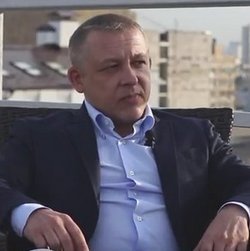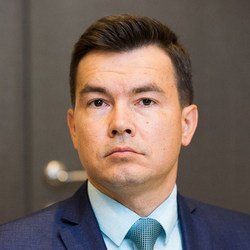Weaker ruble: whose hands it plays into and what it will bring Russian economy to
Economists forecasted slower GDP growth and advised the most profitable way to hold savings in the short run
The Russian currency has begun recovering after 1,5 months of fall. But the biggest question – what's going on, who benefits from this and what should be expected from the economy in the nearest future – is still up in the air. Realnoe Vremya has turned to analysts to have the situation explain and to know forecasts on the ruble's further movement in search for effective ways of banking.
The country gets surplus income with the current oil price
To understand what should be expected it's necessary to analyse what's going with the ruble at the moment and what factors still affect it. According to Marat Sabirov, director of Freedom Finance IC in Kazan, several factors at once have left the currency market, which had a negative influence on the ruble. This is why the ruble has managed to reach 66,8 per $ in the last several years. ''Purchase of the currency of the Russian Central Bank for the Finance Ministry within a budget rule – it is postponed to December 2018 – bigger capital outflow from developing markets in general due to the tightening policy of the US Federal Reserve System and sales in the Russian federal bond market amid planned US sanctions against the Russian public debt can be considered as such factors. High oil price support the ruble, Brent has already been trading at some $79 per barrel for quite a long time,'' he noted.
 Natalia Orlova, head of the Macroeconomic Analysis Centre at Alfa-Bank, calls the fact that the Central Bank stopped purchasing the currency in the domestic market till the end of the year to stabilise the situation in the currency market to soften the inflation blow.
Natalia Orlova, head of the Macroeconomic Analysis Centre at Alfa-Bank, calls the fact that the Central Bank stopped purchasing the currency in the domestic market till the end of the year to stabilise the situation in the currency market to soften the inflation blow.
''It increases the probability that the ruble will return to 65 rubles per dollar by the end of the year. But only if there is no large-scale crisis in developing markets and there are no unpredictable situations with sanctions,'' she explained. ''We still think it would be feasible for the Central Bank not to change the rate in order to not to add volatility to the market by its actions. Moreover, a slight rise in the rate, what the Bank of Russia did, won't significantly affect the rate.'' In her opinion, the conservation of the rate until 26 October looks an optimal scenario.
Sergey Drozdov, analyst from Finam GC, says we shouldn't forget that the national currency continues remaining under pressure of the situation if the next restrictions are imposed by the USA. ''The measures of the Russian economy at this stage presuppose sanctions against new issues of public debt securities,'' he says. ''This is why the ruble rate will be quite volatile before the details of the next sanction package, which is now discussed in the US Congress, are known. In turn, we can't exclude that new aggressive claims of the overseas partners, which will also negatively influence the rate of the Russian currency, before the mid-term election to the US Congress, which will be in November.''
 Among positive factors making the ruble stronger, Eduard Islyamov, director of treasury of Bank of Kazan Economic Development Commercial Bank PLC, called the development of mutually beneficial cooperation with China and countries of the Asian region and fulfilment of projects Power of Siberia, Turkish Stream, Nord Stream – 1.
Among positive factors making the ruble stronger, Eduard Islyamov, director of treasury of Bank of Kazan Economic Development Commercial Bank PLC, called the development of mutually beneficial cooperation with China and countries of the Asian region and fulfilment of projects Power of Siberia, Turkish Stream, Nord Stream – 1.
''I suppose the budget will support the growth in oil prices. But, in general, there can be a further fall in real income of the population due to the instability of the national currency. A negative scenario with a lower ruble rate by 5-10% is possible if severe sanctions against our country are imposed,'' he forecasts.
In economists' opinion, the further dynamics of the rate of Russian currencies will depend on both the external situation and the Russian Central Bank's politics. In answer to the question about if the weaker ruble in the current situation was an advantage or disadvantage for the Russian economy, they replied it was rather a disadvantage than an advantage.
 ''It's disadvantage for citizens because their purchasing power is reducing, the population is becoming poorer, while it's an advantage for the budget and exporters because their incomes, on the contrary, are growing,'' noted Anna Kokoreva, deputy director of Alpari's analytic department. She reminded that higher budget incomes allow to finance projects and carry out the president's decrees.''
''It's disadvantage for citizens because their purchasing power is reducing, the population is becoming poorer, while it's an advantage for the budget and exporters because their incomes, on the contrary, are growing,'' noted Anna Kokoreva, deputy director of Alpari's analytic department. She reminded that higher budget incomes allow to finance projects and carry out the president's decrees.''
Marat Khasiyatullin, director of Ural Reconstruction and Development Bank in Tatarstan, also emphasised that the combination of the weak ruble and high oil prices is for the good of the budget – the volume of payments to the Russian treasury is significantly increased. ''Companies whose business is export-oriented have also benefited,'' he added.
''The country gets surplus income with the current oil price,'' Aleksey Pipkin, director of Forex Club's office in Kazan, confirmed. ''As well as companies whose commercial interest is abroad.'' In his opinion, an alternative situation is in the consumer goods sector. As a result of the recent amendments to the currency rate, cars, household appliances, phones, computers and accessories have grown in price. ''This factor will affect the purchasing power of the population,'' he stated and noted the ruble rate had always been reducing against the dollar and the euro in the last 18 years, and there is nothing surprising now. In his opinion, the weaker ruble is bad in the short run but neutral in the long-term.
 Konstantin Bushuyev, director of Market Analysis Department at Otkritie Broker, shared a positive forecast. ''Nowadays the ruble is underestimated against the dollar compared to fair levels of 63-64. In case of reduction of general risks of developing markets, we can't exclude the USD/RUB rate can reduce to 61-62,'' he supposes.
Konstantin Bushuyev, director of Market Analysis Department at Otkritie Broker, shared a positive forecast. ''Nowadays the ruble is underestimated against the dollar compared to fair levels of 63-64. In case of reduction of general risks of developing markets, we can't exclude the USD/RUB rate can reduce to 61-62,'' he supposes.
Stagnation or real GDP growth awaits us
Many forecasts published in early 2018 aren't coming true. Economists say the appearance of new variables, which weren't previously considered, are the reason. Nevertheless, we've turned to our experts with an ''ungrateful'' question: what to expect from the economy in the nearest future?
We found out, by all accounts, the Russian economy is depending on three key factors at the moment. Firstly, it's the possible imposition of the second package of sanctions by the USA against Russia. ''The content of the package is unknown, but White House representatives said it could mean a reduction in the level of diplomatic relations, prohibition of flights of Aeroflot above the territory of the USA and the reduction in the volume of mutual trade,'' told Aleksey Pipkin from Forex Club. ''All these aspects are unpleasant, of course. But the main painful blow can be landed on the banking sector.''
The second package is the prohibition of US counteragents to settle with Russian state banks. ''This measure is indeed very unpleasant for the economy of Russia. It's six-seven banks including Sberbank, VTB, Gazprombank, Rosselkhozbank, Promsvyazbank,'' he noted.
The second factor is the price of energy sources, precisely oil. The Russian budget is in surplus considering the current price because it's standard price is 40$ per barrel.
''Everything above 40$ is accumulated on the Central Bank's accounts. Here we should note that other oil producing countries also get extra incomes in line with Russia. And agreement between market players is also important here. The price corridor, which Russia will like and remove a part of the rivals from the market, is $65-70 per barrel,'' told the head of Forex Club's office in Kazan.
The third factor, from his point of view, is the Central Bank's behaviour. This factor will be supportive to the ruble in the short run. ''The latest rise in the interest rate by 0,25 basis points hasn't affected the market much. It's rather a demonstration of the determination in case of dire need, the Central Bank will be ready to raise the bar higher. Like it already was in 2014 when the Central Bank raised the bar from 10,5% to 17%,'' the expert noted.
The forecast of the ruble varies. Sergey Drozdov from Finam GC thinks the comeback of the ruble to the diapason of 64-61 is possible only in December this year with favourable conditions and situation in the feedstock market. Konstantin Bushuyev from Otkritie Broker forecasts that if the prohibition on the correspondence of Russian banks with American is introduced, we can expect the USD/RUB rate to grow to 73-75 during the year. ''But the real probability of this prohibition is very small. All other offered sanctions, including the possible prohibition from purchasing new Russian debt by Americans, won't almost affect the ruble rate, and it will be able to continue its local recovery,'' he concluded.
''According to our forecasts of the development of the Russian economy, stagnation or growth in real GDP by 0,5% awaits us un the next two years,'' comments Eduard Islyamov from Bank of Kazan. ''Geopolitical factors, sanctions against big corporations and banks and against the public debt cause difficulties when fulfilling high-tech projects, including in financing.'' ''The Central Bank reports that in the first six months in 2018 the capital outflow from Russia increased by 20% in comparison with the analogous period in 2017. And the imposition of new sanctions can spur a bigger outflow,'' thinks Aleksey Pipkin.
Which currency to bank in?
As for the question about which currency to put money in, analysts coincided that people shouldn't risk now, but they offered different tools.
 ''As practice shows, purchase of a foreign currency, particularly the US dollar and euro, has been the easiest and most available tool for the population since the dissolution of the USSR,'' reminded Sergey Drozdov, analyst of Finam GC.
''As practice shows, purchase of a foreign currency, particularly the US dollar and euro, has been the easiest and most available tool for the population since the dissolution of the USSR,'' reminded Sergey Drozdov, analyst of Finam GC.
Konstantin Bushuyev thinks year-round federal loan bonds are an excellent alternative to short-term ruble deposits. ''Long-term sovereign bonds, which can also be sold in a year, are an alternative to dollar deposits,'' he says. ''Investors who look for a higher risk can be offered specific fundamentally strong stories in marketable Russian shares. For instance, VTB shares sold by panicking investors or preferred Sberbank shares are already demonstrating two-digit expected dividend yields.'' In his opinion, investments in the dollar aren't almost feasible, as a noticeable loss can be got here till the end of the year. ''But in case of the too strong ruble, we can look at the US currency again. We are looking at the euro more positively than the dollar in the long term,'' he agreed with his colleague from Finam.
 Marat Khasiyatullin, director of Ural Reconstruction and Development Bank in Tatarstan, gave, as he said, a ''traditional'' piece of advice: to hold savings in the currency they are going to spend.
Marat Khasiyatullin, director of Ural Reconstruction and Development Bank in Tatarstan, gave, as he said, a ''traditional'' piece of advice: to hold savings in the currency they are going to spend.
''What shouldn't be done is to take all ruble savings under emotions to the exchange and exchange them into dollars or euros at an unfavourable rate,'' he advised.
''We recommend banking in US dollars in the nearest future and invest in euro bonds of super issuers of experts with a duration of 2-3 years, we advise riskier investors to invest rubles in shared equity tools of exporters with high dividend profitability,'' Eduard Islyamov offers.
Anna Kokoreva agreed with him: ''At the moment, the situation is very unpredictable. We recommend banking 50-70% of your savings in a foreign currency. Bank deposits' profitability is low. However, this tool remains topical while it's higher than the official inflation level. Once can buy bonds with a higher reliability rating. One shouldn't resort to more profitable risk tools.''
 Marat Sabirov said deposits are usually meant. However, now it's not the most profitable option, he thinks.
Marat Sabirov said deposits are usually meant. However, now it's not the most profitable option, he thinks.
''The stock market looks more attractive, where the entrance threshold and risk degree can be regulated. Particularly I offer to pay attention to euro bonds, which can bring 5-6% a year, moreover, it's a very reliable tool, in itself. In addition, it's always possible to choose shares of big and marketable companies, which not only grow by 10-15% a year but also always pay out dividends,'' the expert forecasts.
Aleksey Pipkin distinguished himself and offered to invest in gold in the nearest time: coins and ingots. ''Their value reached the prices of 2008, and at the moment we see this asset's price is growing. Federal loan bonds are the second interesting area to invest in,'' he replied and added that it's still good to bank in different currencies, which should include both traditional rubles, dollars and euros and Japanese yen, which is unusual for Russia. ''Such a variety will be more diversified, the yen is a traditional asset, a refuge like gold,'' he noted.